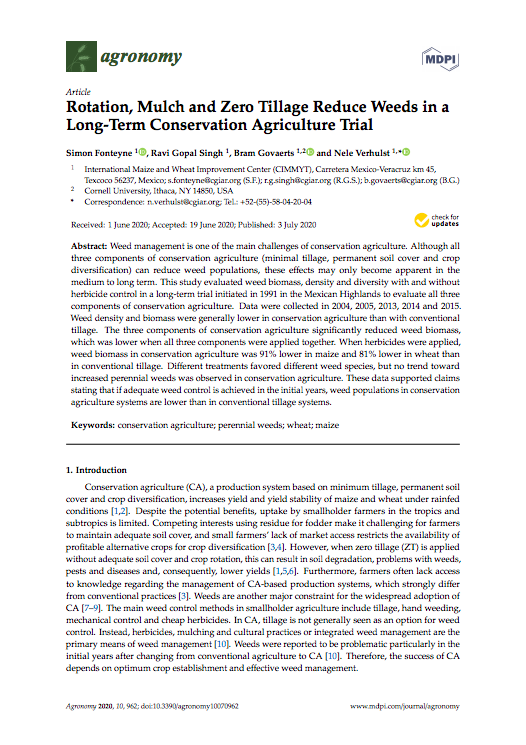Rotation, Mulch and Zero Tillage Reduce Weeds in a Long-Term Conservation Agriculture Trial

ABSTRACT
Weed management is one of the main challenges of conservation agriculture. Although all three components of conservation agriculture (minimal tillage, permanent soil cover and crop diversification) can reduce weed populations, these effects may only become apparent in the medium to long term. This study evaluated weed biomass, density and diversity with and without herbicide control in a long-term trial initiated in 1991 in the Mexican Highlands to evaluate all three components of conservation agriculture. Data were collected in 2004, 2005, 2013, 2014 and 2015. Weed density and biomass were generally lower in conservation agriculture than with conventional tillage. The three components of conservation agriculture significantly reduced weed biomass, which was lower when all three components were applied together. When herbicides were applied, weed biomass in conservation agriculture was 91% lower in maize and 81% lower in wheat than in conventional tillage. Different treatments favored different weed species, but no trend toward increased perennial weeds was observed in conservation agriculture. These data supported claims stating that if adequate weed control is achieved in the initial years, weed populations in conservation agriculture systems are lower than in conventional tillage systems.